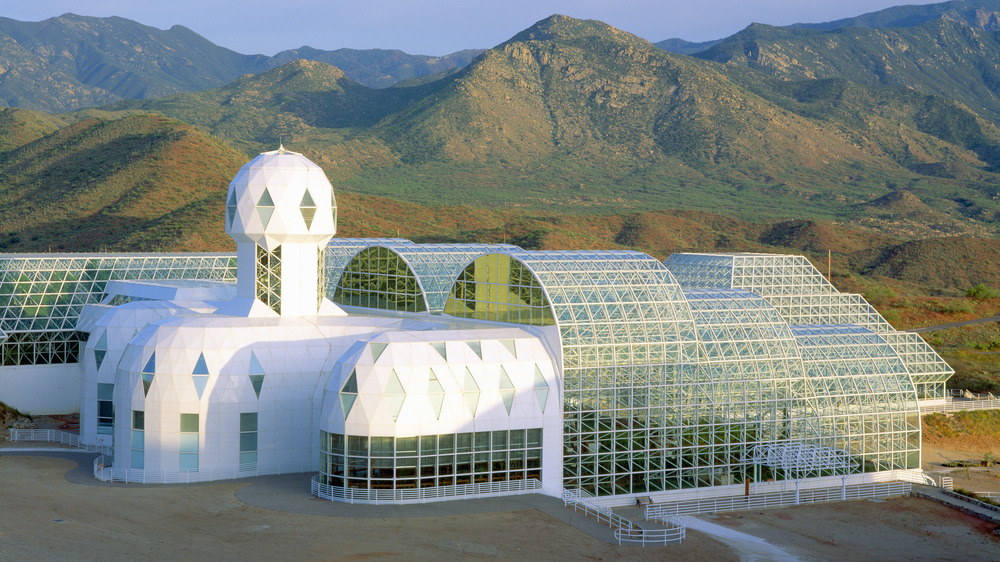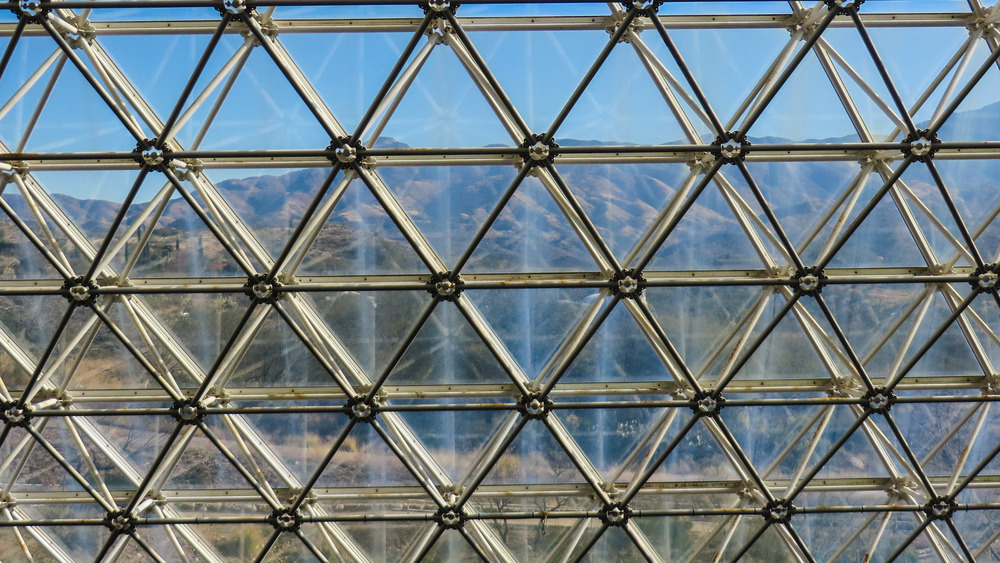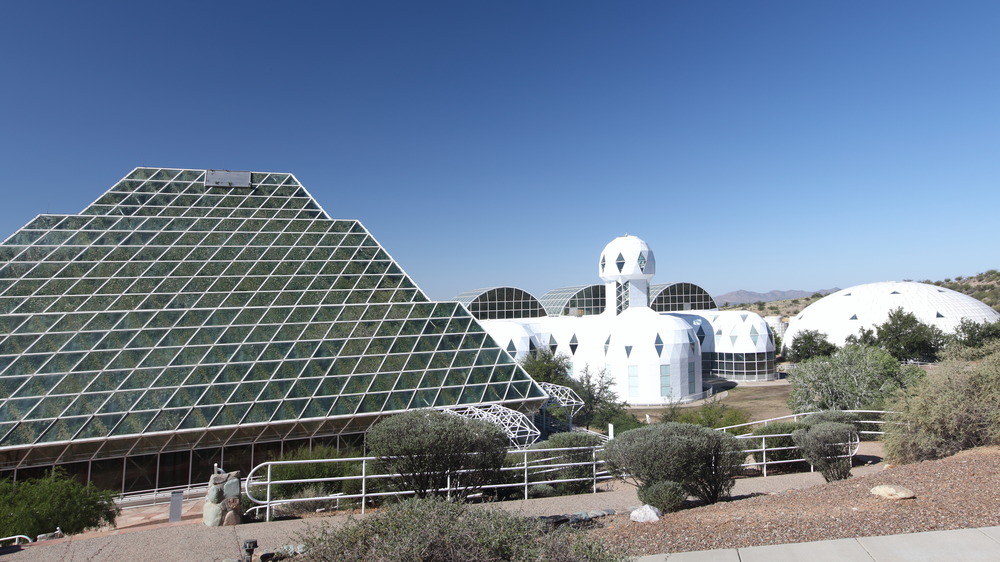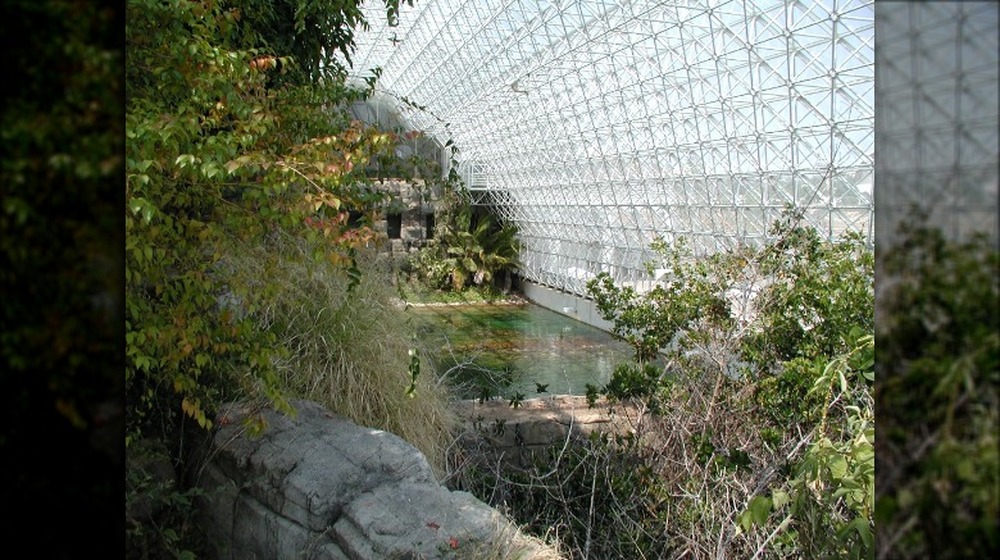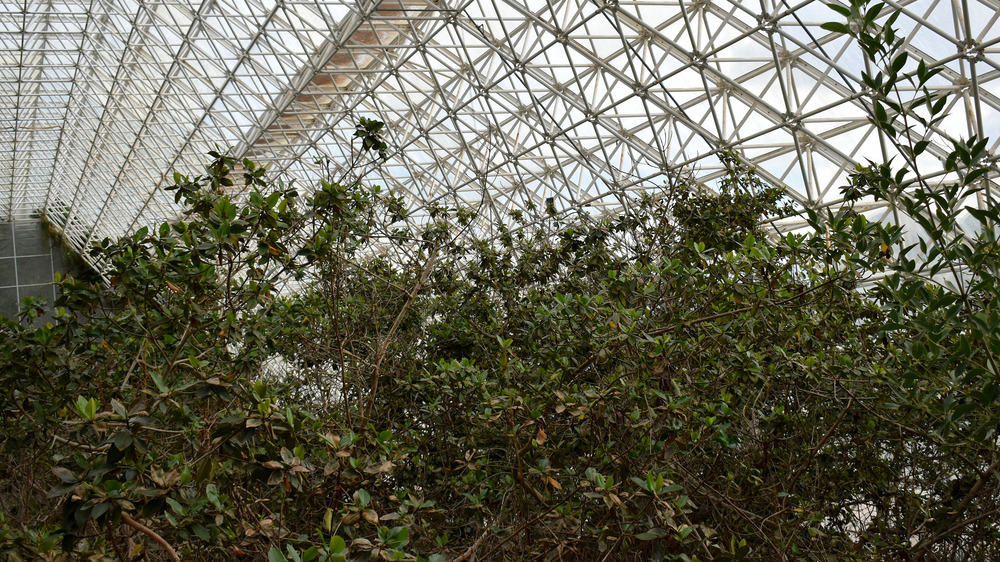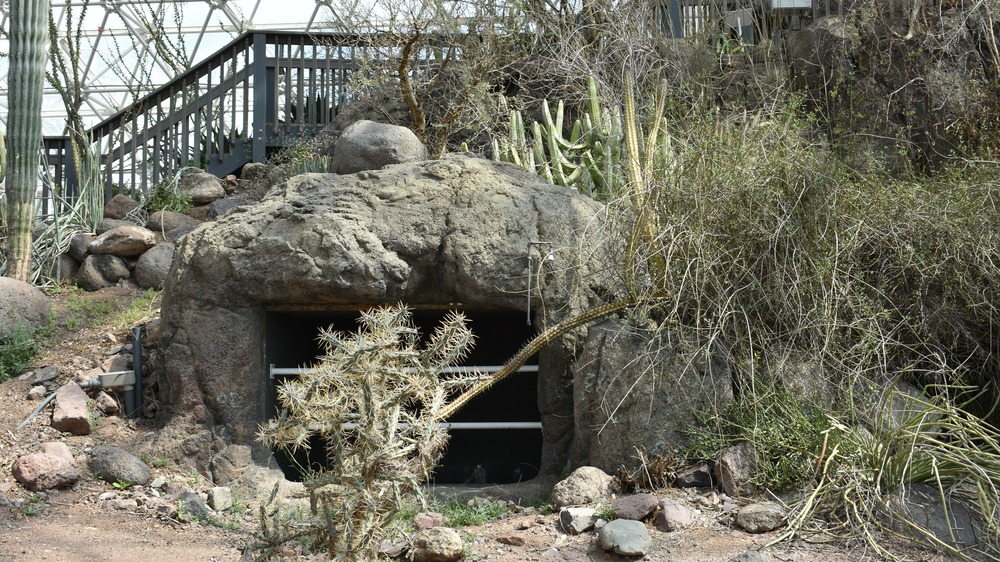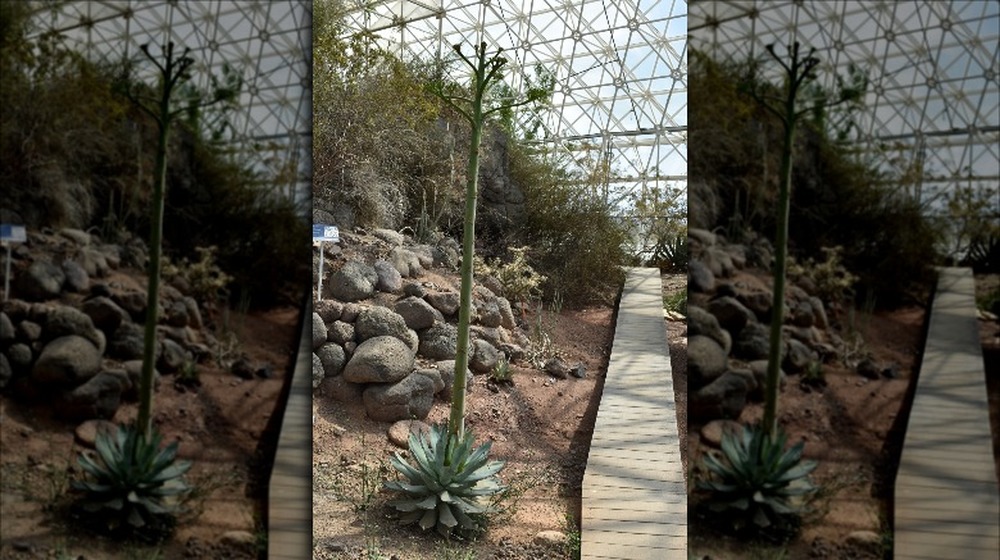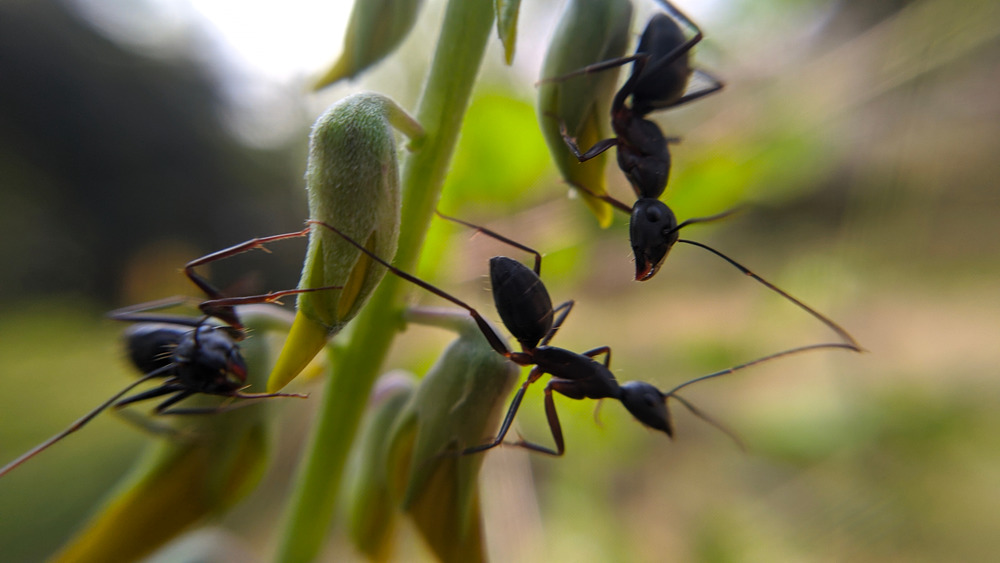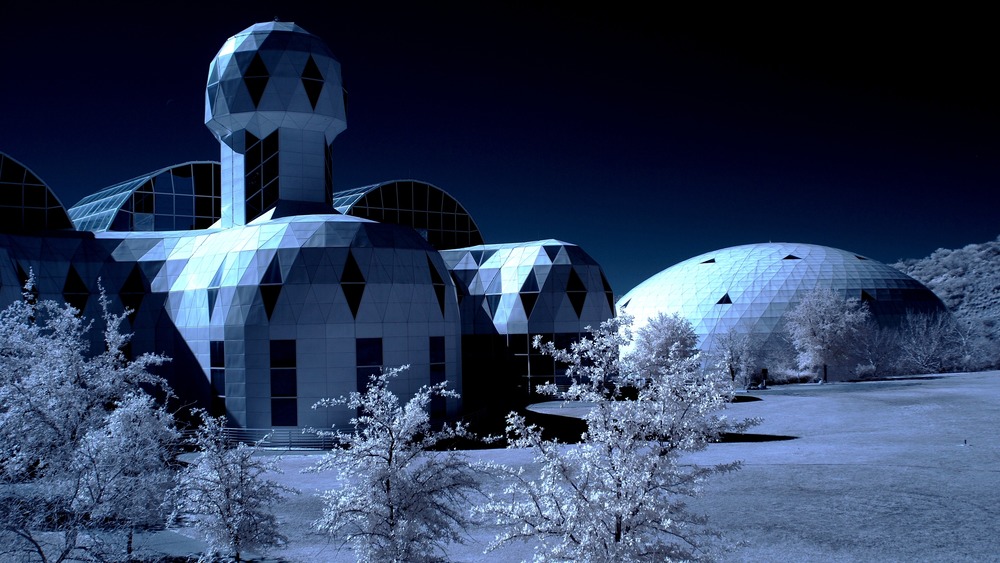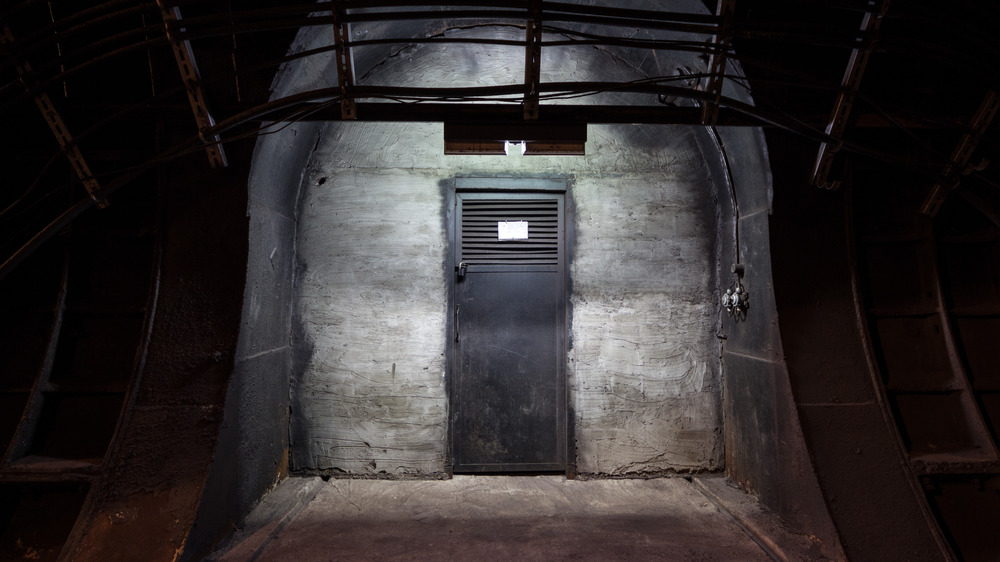The Crazy Real-Life Story Of Biosphere 2
Way back in ye olde days of 1991, all the major news outlets were reporting on a story that seemed more like something out of a science fiction movie than something that was happening in real life. It was a whole new and exciting decade, though, so everyone just decided to go with it in hopes that it was going to lead to some even more exciting space travel and colonization that the movies had promised we'd see by the new millennium. (Spoiler alert: the movies lied.)
In a nutshell, the project was both incredibly simple and insanely complicated. In an attempt to see if it was possible to build — then live in — a self-contained, artificial world, eight people headed into isolation from the rest of humanity. They entered Biosphere 2 on September 26, 1991, and they had signed up for the long haul: two years of trying to not just live but thrive in their own little man-made world, with no help from the outside.
At a glance, it sounds pretty cool. History says it was billed as an "ecological laboratory and planetary commune prototype," which basically meant that if we wanted to colonize other planets, we knew we needed to make something work on earth first. And that meant complete isolation: nothing in, nothing out. Did it work? Not really.
There were a few different goals in mind for what Biosphere 2 was supposed to achieve
Biosphere 2 was an insanely audacious project. It was seen as the second Earth (hence, "Biosphere 2"), and the company behind the grand design knew if they could build a completely independent complex based on the natural systems of the world, the possibilities were endless.
While Biosphere 2 had all the trappings of a legit scientific experiment that was meant to determine just how plausible it was to set up a moon base, or an outpost on another planet, there was more to this brainchild of Space Biospheres Ventures. It was designed by the privately held company as what The Washington Post called "an 'ecopreneurial' project," which essentially means that the powers-that-be expected it to make money. For starters, there was the tourism factor. Biosphere 2 was at the center of a massive tourism push to bring people to the Arizona desert, because when they got there, they could go on a 2-hour tour of the place (from the outside, of course), and see what the home of the future just might be.
The other part of it was the tech. Space Biospheres Ventures took a massive gamble: if it worked and the technology they created for the project either rolled over into actual habitats, they stood to make a fortune. Even if it didn't, Biosphere 2 was a testing ground for patented tech that could be used elsewhere... again, for a fortune.
The group behind Biosphere 2 wasn't quite 'scientific'
According to The Washington Post, the scientific community was less than impressed with the venture right from the beginning, and at the heart of the matter was the group itself.
The roots of the Biosphere 2 program went back about 20 years to a 70s-era commune called the "Synergetic Civilization." Every good commune has a charismatic leader and a manifesto, and this one had both. At the helm was John Allen, a man who preached about the death of Western civilization — a demise, he said, that had already happened. He encouraged his followers to not just embrace the communal life, but to stage demonstrations — amateur theater style — to promote their ideals, while partaking in rituals like howling together.
Fast forward to the 90s and Biosphere 2, and not only was Allen at the head of development, but when it came time to pick the research team, he picked members of his commune. That presented a massive problem to the credibility of the project. As early as 1985, news outlets were already reporting on the group while throwing around the term "cult." There were questions of bullying (and claims that being hit by Allen was "a compliment"), isolation, indoctrination into group beliefs, and child abuse and neglect. By the time Biosphere 2 opened its doors, it was still being debated: were they scientists wanting to colonize other planets, or were they a doomsday cult looking to flee their own?
So, what exactly was inside?
In 1985, The Washington Post was reporting that there were questions surrounding one of their major donors, a multimillionaire named Edward Bass, who had supposedly suffered through more than one beating at the hands of Synergetic Civilization leader John Allen. Regardless, he had still donated around $30 million toward the construction of Biosphere 2, and the original plans included having the entire complex in orbit around the planet by the mid-90s.
Ambitious, indeed, considering the University of Arizona says that construction didn't even start until 1986. Still, Biosphere 2 was impressive: it covered more than three acres, and contained miniature versions of a tropical rainforest, wetlands, a savannah grassland, a desert, and even had an ocean with its own coral reef.
In the basement — which stretched over nearly the full three acres — was the "Technosphere," where all the equipment that helped run the dome was kept. That included things like generators, an "Energy Center," and units that would help control the air temperature and humidity inside the structure. It's also worth mentioning that machinery that ran on electricity was allowed within their "self-sustaining" model because — in theory — any otherworldly outpost would have a way of generating its own electricity, whether that was by solar power, wind, or some other method.
Biosphere 2 wasn't self-sustainable from the very beginning
It kind of goes without saying that an outpost on Mars — like the one that The Washington Post says Synergetic Civilization had their collective hearts set on — would need to be completely self-sufficient. There would be no running to the local 7-Eleven for toilet paper and bottled water, after all, and even as tourists visited Biosphere 2 and left with visions of vacations on Mars dancing in their heads, it absolutely wasn't as self-sufficient as advertised. In fact, from the day those eight "bionauts" stepped inside, it wasn't self-sufficient at all.
The problem was the air. According to an article in the International Journal of Emergency Medicine, it doesn't take much CO2 in the air to cause some serious side effects, and when the air reaches about 10 percent CO2 it could be deadly. Levels were so high that before the bionauts were even sealed inside, the decision was made to add a machine called a CO2 scrubber: given that they run on canisters of chemicals, they're not exactly viable in a self-sustaining environment.
It wasn't long before news outlets were reporting on other ways they were sort of cheating: when one bionaut was removed for emergency surgery, she returned with extra supplies. Later, word got out (via History) that in addition to stockpiles of food they'd had access to the whole time, there were regular shipments of supplies that made their way past the supposedly closed doors.
Daily life in Biosphere 2 was... complicated
Bionaut Mark Nelson wrote a piece for Dartmouth Alumni Magazine, and talked about what it was actually like to be sealed inside Biosphere 2. He described it as "right out of a science fiction magazine," and said that their days followed a strict schedule. They had time designated for tasks like caring for the complex's animals, writing up research and reports, and even doing interviews. The largest chunk of time — 25 percent — was spent farming, and this is where things started to get tricky.
Of the eight people sealed in Biosphere 2, they had exactly zero farming experience between them. They started out with 80 crops, but not everything was a hit. Their coffee trees produced so few beans that they enjoyed a cup every couple of weeks, and it took about four months for a pizza — but ate more than a pound of sweet potatoes every day, and enough carrots and bananas that they started to turn a little orange.
Nelson weaves a tale of wonder, saying that they "reveled the in the day-by-day sensual pleasures of each biome," while they enjoyed rare treats like ice cream and cheese, and celebrated holidays and special events with their own, homegrown wine. It sounds like a paradise on earth, but that's not the whole story.
What they said happened... and what actually happened
Sally Silverstone was one of the bionauts sealed in Biosphere 2, and when she spoke with The Independent about her experience, it sounded pretty amazing. They had two-story apartments with all the luxuries a person really needs (including plumbing), they milked goats, picked food out of the gardens, and oversaw their own little corners of paradise. But other comments indicate that it wasn't all kittens and rainbows.
Her Biosphere 2 colleague Mark Nelson wrote for the Dartmouth Alumni Magazine that tempers ran hot and patience was short. He says: "We contracted a syndrome psychologists call irrational antagonism. That is, we split into two groups of four." At the heart of the conflict was whether or not the mission objectives they had gone in with would stay the same, or if they were going to adjust as new situations and information arose. And it got pretty bad: in spite of the fact that Nelson said they worked on getting along because they knew they had to, others spoke about being spit on and coming close to physical confrontations.
Silverstone later added: "We knew how not to push each other's buttons. ... But there were lots of fights. ... There wasn't real violence behind them, but there was a certain passion."
Biosphere 2 went really, really badly
When bionaut Mark Nelson wrote his piece for the Dartmouth Alumni Magazine, he described Biosphere 2 as "the greatest experiment ever conducted in ecological self-organization," adding: "We proved that a sealed ecosystem can work for years, a lesson Mars colony planners can build on." But in 1996, The New York Times' report on the state of the Biosphere 2 project suggested something different.
It wasn't until Columbia University took over the complex that word started to get out about what had happened, and that's starting with the species takeover. Of the roughly 4,000 species of plants and animals that went in, there were some surprising (and not-so-surprising) victors that all but eliminated other species. Pollinators were gone, but crazy ants and cockroaches multiplied exponentially. So did morning glory vines — they thrived in a high CO2 atmosphere, while trees rotted and food crops failed.
Discover reported that since they didn't want to use artificial fertilizers, they kicked off the Biosphere plan by loading up with nutrient-rich soil... that was too rich. Bacteria thrived and grew, released more and more CO2, and started to suffocate the bionauts. The situation was dire: Columbia's report suggested that the air turned so rotten that it was bordering on a level that could have caused permanent brain damage.
Steve Bannon got involved in Biosphere 2
Biosphere 2 was, ultimately, the project of a privately-owned company who was looking to turn a profit. While John Allen preached about lofty ideas like trying to rebuild society and civilization, the advisory board overseeing the entire thing had less optimistic opinions to share. Just 10 months into the projected two-year experiment, the board condemned pretty much everything that had gone on to date, then — when things turned really ugly — The New York Times says they simply all quit.
That's when Space Biosphere Ventures decided to bring in someone to get the project back on a legitimate, money-making track. That ended up being Steve Bannon, future advisor to future President Donald Trump, who was then an investment banker in Beverly Hills. It was Bannon who was at the helm when the first Biosphere 2 mission came to a close, and the second began. (According to Discover, the original plans put forward by Allen included keeping these missions going for the next century.)
Bannon had different ideas, and sacked everyone that had been in charge of getting Biosphere 2 up and "running," including Allen. By 1994, The New York Times was reporting that Ed Bass — the millionaire who had funded the project in the first place — was trying to get control via the courts, while just about all other matters surrounding the project descended into a hellish nightmare of lawsuits upon lawsuits.
They came out pretty healthy...ish?
When the eight bionauts finally came out of their time in isolation, everyone wanted to know how they were. According to what Mark Nelson wrote for the Dartmouth Alumni Magazine, they "were in remarkably good health."
But Bill Gifford, author of the book on aging Spring Chicken, says (via Business Insider) something different. He says that Roy Lee Walford — Biosphere 2's doctor — oversaw what he dubbed the "healthy starvation diet." The effects of a lifestyle filled with hard work and a low-fat, 1,800-calories-a-day diet had taken a toll: he'd dropped from 145 pounds to 120, was having difficulty walking, and in the months after emerging from Biosphere 2, he suffered from depression and chronic episodes where he would suddenly collapse.
In spite of the fact that he came to rely on a walker, The New York Times reported that he remained a steadfast proponent of the "healthy starvation diet." He averaged about 1,600 calories a day for the rest of his life, and promoted the idea that it ultimately made a person healthier. He died in 2004: he had been diagnosed with Lou Gehrig's disease.
Sabotage ultimately brought Biosphere 2 to an end
So, why did the Biosphere program really come to a screeching halt? It turns out that two former bionauts did what lawsuits couldn't: they smashed the whole thing to bits. According to The New York Times, it wasn't long after Steve Bannon did a mass purge of Biosphere 2's leadership that two of the people who had emerged from the first mission decided that they needed to end it all for the good of everyone involved. Mark Van Thillo and Abigail Alling headed back to Biosphere 2 on April 4, 1994, and started breaking stuff.
Before they were arrested, they managed to open a handful of doors, get into the ventilation system, and break some of the system's glass panels. After their arrest, they likened the whole thing to the Challenger disaster. That tragedy had been the fault of management, and they claimed that not only did they know how bad things were, but that they felt they had to do it before the crew of the next mission was subjected to the same thing they had been.
At the time, the new Biosphere 2 leadership claimed (via The New York Times) that they hadn't actually managed to do much, and things were going to continue as planned. But that didn't happen. The complex was re-tooled for more small-scale experiments, and was officially given to the University of Arizona in 2011.
There were some seriously important lessons to come out of Biosphere 2
Decades later, Biosphere 2 had been largely regarded as a failure. But, in taking a look back at the project, a little bit of time has allowed for the realization that there's still some important lessons researchers — and the world at large — could still learn from the experiment.
Wired says that one of the biggest is "Ecology can be a science," and that's a huge deal. Usually, scientific experiments are the best when they conform to the scientific method, and there are so many variables in ecology (not to mention the development of entire biomes) that it seems not so much a science as something researchers just watch. Biosphere 2 — with their biomes, plants, animals, and artificial systems, proved otherwise. Even something as complicated as a planet's ecosystem can be broken into pieces and understood.
Also hugely important? Their work on the artificial coral reef constructed in their ocean proved that stress on these delicate ecosystems can be managed, which gives us some hope for our real-world reefs.
It's also entirely possible there's more lessons there, but here's the thing: in 2019, The New York Times reported that of all the data that was collected, the vast majority of it was lost somewhere between being collected and being stored in the University of Arizona's archives. Years of work was simply gone.
They haven't been the only ones to try it
Biosphere 2 may have been a super-flashy, well-known experiment to test the viability of building outposts in unforgiving environments, but they're not the only game in town — and another, similar experiment is still going. The Siberian Times got a peek at BIOS-3, an experiment in the Russian city of Krasnoyarsk that's been going since the Cold War. In 1965, Soviet scientists essentially built a bunker that would be designed to be self-sustaining and support human life. It's a far cry from Biosphere's exotic ecosystems: think more of a panic room where scientists on the outside are always watching.
The bunker was pretty basic, and contained two plant rooms, a "household compartment," and a bathroom. Three scientists went in at a time, and survived on foods like beets, cabbage, onions, wheat, and potatoes. The longest mission went for 180 days, and engineer Nikolay Burgreyev holds the record: he's spent 13 total months inside.
BIOS-3 has had some of the same issues as Biosphere 2, but shorter experiments and tighter controls allowed them to work out many of the problems... giving hope to the future of space travel.
